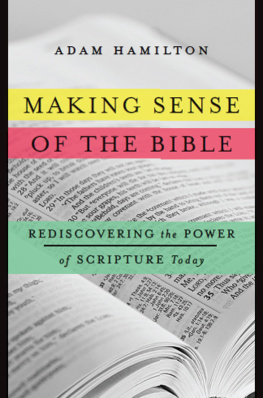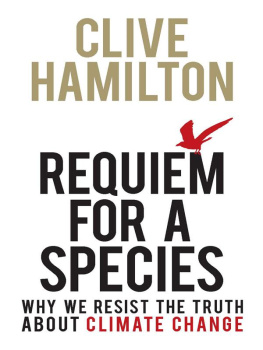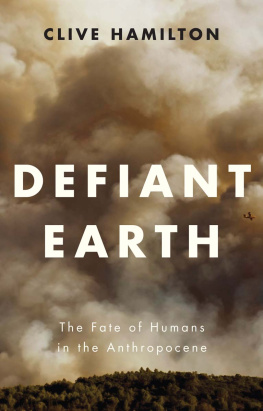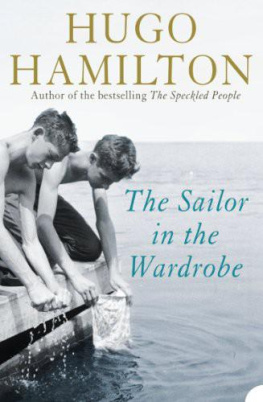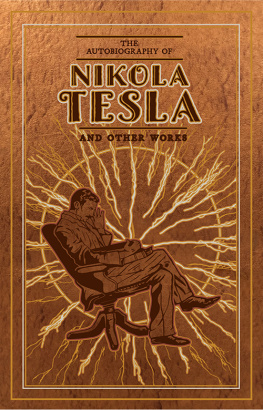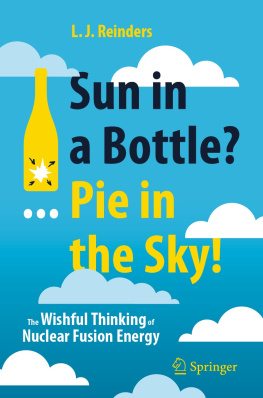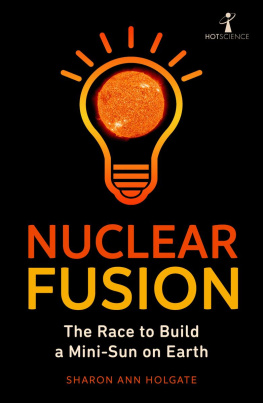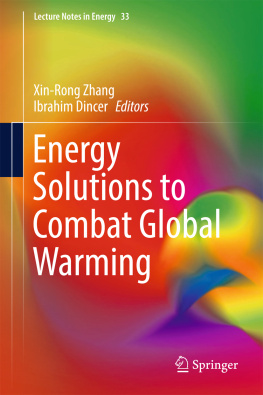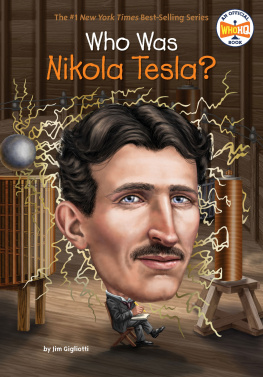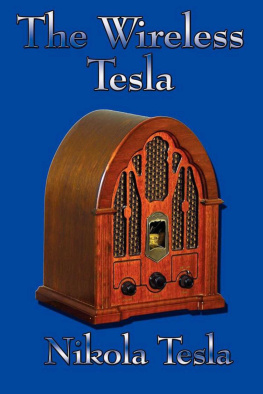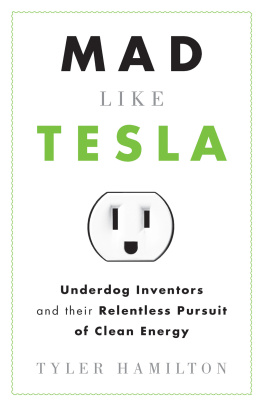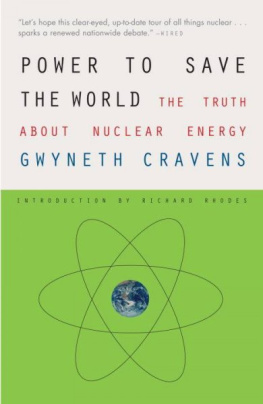Copyright Tyler Hamilton, 2011
Published by ECW Press
2120 Queen Street East, Suite 200, Toronto, Ontario, Canada M4E 1E2
416-694-3348 / info@ecwpress.com
All rights reserved. No part of this publication may be reproduced, stored in a retrieval system, or transmitted in any form by any process electronic, mechanical, photocopying, recording, or otherwise without the prior written permission of the copyright owners and ECW Press. The scanning, uploading, and distribution of this book via the Internet or via any other means without the permission of the publisher is illegal and punishable by law. Please purchase only authorized electronic editions, and do not participate in or encourage electronic piracy of copyrighted materials. Your support of the authors rights is appreciated.
Library and Archives Canada Cataloguing in Publication
Hamilton, Tyler J.
Mad like Tesla : underdog inventors and their relentless
pursuit of clean energy / Tyler Hamilton.
ISBN 978-1-77041-008-4
Also issued as: 978-1-77090-074-5 (PDF) ; 978-1-77090-073-8 (EPUB)
1. Renewable energy sourcesPopular works. 2. Energy
developmentPopular works. 3. Inventors. I. Title.
TJ808.H36 2011 333.794 C2011-902853-0
Editor for the press: Crissy Boylan
Cover and text design: David Gee
Typesetting: Rachel Ironstone
Production: Troy Cunningham
Interior images by Tyler Hamilton, except (print edition page numbers) p. 74/75, illustrations by Tania Craan based on an illustration by Brian Kaas for Sierra magazine; p. 120 PAX Scientific; and p. 153/154 illustrations by Tania Craan based on illustrations by Algenol Biofuels.
The publication of Mad Like Tesla has been generously supported by the Canada Council for the Arts, which last year invested $20.1 million in writing and publishing throughout Canada, by the Ontario Arts Council, by the Government of Ontario through Ontario Book Publishing Tax Credit, by the OMDC Book Fund, an initiative of the Ontario Media Development Corporation, and by the Government of Canada through the Canada Book Fund.

for my bundles of joy,
Claire and Ruby
TYLER HAMILTON is an author, adjunct professor, and award-winning energy and technology writer for the Toronto Star, where for six years he has been one of Canadas leading voices on green technology issues and trends through his weekly column. Read his blog at CleanBreak.ca.
INTRODUCTION
Cheering the Lone Runner
It will never work. It can never be done. It is impossible. It will never be accepted.
How often, throughout modern history, have those words been spoken? There are dozens of classic examples. Physicist and engineer Lord Kelvin, president of the British Royal Society, famously said back in the late 1800s that heavier-than-air flying machines are impossible and x-rays will prove to be a hoax. Albert Einstein said in 1932 that he couldnt see nuclear energy ever being obtainable. Tunis Craven, in his role as commissioner of the U.S. Federal Communications Commission in 1961, spoke a few years prematurely when he dismissed the future prospect of communications satellites. There is practically no chance communications space satellites will be used to provide better telephone, telegraph, television, or radio service inside the United States, pronounced Craven, only to be proven wrong when the satellite Syncom 3 transmitted television signals from Japan to the United States, giving Americans live foreign coverage of the 1964 Summer Olympics. Many theoretical physicists during the late 1960s and 70s said nuclear magnetic resonance technology, first discovered in the 1930s, could not be adapted to detect cancers and other diseases in the human body. A New York physician named Raymond Damadian ignored the naysayers and built his own body scanner. In 1977 he successfully performed the first full-body magnetic resonance imaging (MRI) exam on a human. Receiving an award from the Massachusetts Institute of Technology in 2001, Damadian said criticism and skepticism come with the territory of invention and innovation: The bolder the initiative, the harsher the criticism.
In the area of energy technology and systems, its arguable that no one has been doubted, underestimated, or challenged more than Serbian-American engineer Nikola Tesla (18561943), and perhaps no innovator has proven so many people wrong over the past 100 years. His best-known invention was the alternating current (AC) induction motor, patented in 1888, which became crucial to the subsequent development of high-voltage AC power systems that could distribute electricity over long distances. Direct current (DC) systems of the day, by comparison, were limited because they produced electricity that had to be consumed within a couple of kilometers of where it was generated. Tesla appreciated early in his life the benefits of AC and the shortfalls of DC, and he first began formulating his AC motor designs as a student at the Austrian Polytechnic School in Graz. One day, after sharing his thoughts with a professor he greatly respected, the young Tesla, in his early 20s, was promptly rebuffed in front of his peers. Mr. Tesla may accomplish great things, his professor quipped, but he will never do this... Its a perpetual motion machine, an impossible idea. Of course, what Tesla described had nothing to do with perpetual motion. Yet his professor, unable to grasp the concept, did not hesitate to lump it into the category reserved for loony inventions.
A few years later, while walking in a park late one afternoon with a friend, Tesla said a clear design for his motor shot into his head like a flash of lightning. He found a stick and began drawing diagrams in the dirt. Six years later, he formally revealed the design to the American Institute of Electrical Engineers, though the battle to have it more widely accepted was just beginning. He drove the message home by funding a vicious public relations campaign that involved electrocuting dogs and other animals including an elephant with AC current. His campaign didnt work, of course, and AC power generation and transmission systems based on Teslas designs eventually came to dominance around the world. It wasnt an impossible waste of time after all.
I first became fascinated with the life and work of Nikola Tesla 10 years ago while researching a story marking the 100th anniversary of Guglielmo Marconis first transatlantic wireless communication. On December 12, 1901, the letter S was transmitted in Morse code from a wireless transmission station in Cornwall, United Kingdom, to Signal Hill in St. Johns, a city in the Canadian province of Newfoundland and Labrador. The 3,500-kilometer transmission across the Atlantic Ocean was hailed as a great moment in science and eventually led to Marconi being branded as The Father of Radio. Its a nice story, except for the fact that Tesla was the true father of radio. Tesla filed his first radio patents in 1896, five years before Marconi, and when Marconi did file to the U.S. patent office, it initially rejected his application for being too similar to those submitted by Tesla. It was only when the U.S. Supreme Court ruled on the patent issue nearly 50 years later, in 1943 just a few months after Teslas death, that the matter was settled for good: Tesla invented radio.
The more I dug into the life of Tesla, the more I realized how much his inventions and vision influenced the 20th century and continue to do so in our current century. In 1898 he demonstrated a remote-controlled robotic boat that heralded the beginning of remote-controlled electronics and multichannel broadcasting. Tesla called it teleautomation and referred to his boat as the first of a race of robots mechanical men which will do the laborious work of the human race. Learning this gave new meaning to the remote-controlled, battery-powered Spiderman helicopter I fly with my kids in the basement, though the larger influence is obvious everything from the Mars Rover to unmanned drone planes to cruise missiles. Astor, who went down with the Titanic in 1912 at the age of 47, would only live long enough to get a taste of how Teslas robot race would evolve.
Next page

